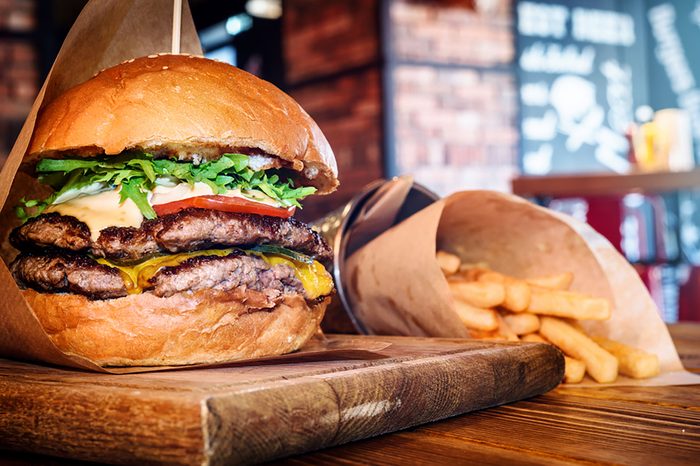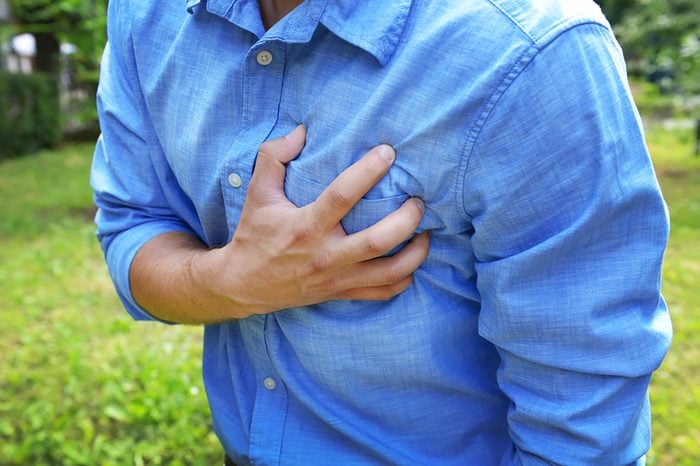Flowers abloom and GI distress
If you’ve noticed that you tend to experience unpleasant symptoms like heartburn and a bitter taste in your mouth as soon as the flowers start to bloom, take heart. Though the symptoms may seem to signal gastroesophageal reflux disease (GERD), you may actually have eosinophilic esophagitis (EOE), an allergic disorder that prompts irritation in the lining of your esophagus and is more often diagnosed in spring than in winter. “We believe that the increase in pollen in the spring can trigger EoE,” says Evan S. Dellon, MD, an associate professor of medicine and epidemiology in the division of gastroenterology at the University of North Carolina School of Medicine in Chapel Hill, North Carolina.

What we know about GERD
GERD can involve a spectrum of symptoms ranging from heartburn and burning behind your sternum to the feeling of liquid (or food) coming back up into your throat. Between 25 and 40 percent of the general population experiences it. “GERD ranges from the person who goes out on date night, eats too much, and then has heartburn and regurgitation later that evening, to patients who have constant acid reflux that has led to severe inflammation and ulcers in their esophagus,” says Scott Gabbard, MD, a gastroenterologist at the Cleveland Clinic who specializes in esophageal disorders. These are other foods to avoid if you have acid reflux symptoms.

What we know about EoE
In the word of gastroenterology, EoE—which manifests usually in difficulty swallowing solid food, food getting stuck and sometimes heartburn and chest pain—is a hot topic. “It doesn’t get as much press as you would expect but it seems to be increasing in incidence,” Dr. Gabbard says. “We also don’t completely understand why it occurs. The thinking is that it may be due to genetics and environmental exposure.” Interestingly, EoE is diagnosed only with an endoscopy. “Typically you shouldn’t see eosinophils in the lining of the esophagus, but patients with asthma have high numbers of these ‘allergic cells’ in their airways,” Dr. Gabbard says. “With EoE, some sort of allergic response causes a large amount of these eosinophils to come into the lining of the esophagus which can affect the ability of the esophagus to squeeze food into the stomach.” (Here are the medical reasons to never ignore heartburn.)

It’s possible to have overlapping symptoms
With GERD and EoE sharing so many symptoms, how do you know which one you have? If you tend to experience these symptoms in spring and summer and you don’t get any relief from antacids or acid-suppressing drugs, ask your doctor to order an endoscopy to see just how irritated your esophagus is. “When I see a patient having difficulty swallowing or pain without swallowing, it can often be EoE,” says Alexandra Guillaume, MD, a gastroenterologist at Stony Brook University Hospital in New York. “It happens when the eosinophils—reacting to some sort of allergy—overwhelm the esophagus, leading the esophagus itself to become spastic. This makes it difficult for patients to swallow.”

Eat to Beat GERD and EoE
Luckily both GERD and EoE can be treated with dietary changes, and there are several home remedies that can help you manage your symptoms. In general, experts urge people with symptoms to avoid eating spicy or fatty foods, chocolate, and mint and to be wary of taking fish oil supplements. “Pregnant women (or women on hormone replacement therapy) may also experience these symptoms, as well as those on blood pressure and some antidepressant medications,” Dr. Guillaume says. (Try these home remedies for GERD and heartburn.)

You may need meds
The drugstore aisles are packed with over-the-counter remedies for acid reflux, indigestion, and general stomach discomfort. If you find yourself routinely reaching for Tums and Maalox, you should speak with a physician. “To diagnose GERD, the guideline is that if you have typical symptoms like heartburn and regurgitation that improves with medication—usually a two-month trial of a proton pump inhibitor (PPI)—there’s no need to do any further testing,” Dr. Gabbard says. “However, anyone who has heartburn that doesn’t respond to acid medicines should see a doctor to discuss booking an endoscopy.” And, if you’re experiencing weight loss, vomiting, severe heartburn, or severe trouble swallowing, always see a physician right away.

GERD symptom checklist
You may have GERD if you:
- Have a burning sensation in your chest (heartburn) or chest pain
- Experience a bitter or sour acid taste in your mouth
- Feel worse lying down or after heavy meals
- Get relief after taking an antacid like Tums, Rolaids, or Maalox
Here’s how to understand the differences between acid reflux, heartburn and GERD.

EoE symptom checklist
You may have EoE if you:
- Have trouble swallowing that persists despite taking acid-reducing medication
- Constant sore throat or cough
- Food stuck in your throat
- Heartburn, reflux, and chest pain

